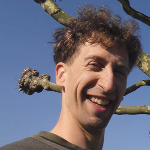
|
Arno Klein
Email: arno@childmind.org Phone: 347‑577‑2091 Google Scholar: bibliography Open Science Framework: papers, posters, proposals, and presentations |
|
Current research: Mental health technologies for therapy, education, and research
I direct the MATTER Lab at the Child Mind Institute, a non-profit in Manhattan. Our mission is to advance our understanding and care of mental health by building, improving, and deploying mind-assisting technologies (such as wearable devices, phone apps, and analytics tools) for use in therapy, education, and research. We are developing various mobile and web platforms, including MindLogger, a general-purpose data collection platform to administer a wide range of assessments and interventions, including surveys, drawing and tapping tasks, and audio recordings. We support the Healthy Brain Network, an ongoing study of 10,000 children and adolescents that collects and freely disseminates data from brain imaging, eye tracking, voice, video, biosamples, and a large battery of mental health assessments. An example wearable device is our wrist-worn position tracker that records and remotely monitors compulsive behaviors (such as hair pulling and nail biting) and can provide an alert during such behaviors (by haptic feedback on the wrist). Previous positions include Director of Neuroimaging at Sage Bionetworks, Assistant Professor of Clinical Neuroimaging at Columbia University, and Information Synthesis Theorist at the Parsons Institute for Information Mapping. |
Employment |
||

|
2016 - |
Director of the MATTER Lab Child Mind Institute, Manhattan - Building wearables, apps, and other technologies to study mental illness and offer potential interventions |
|
|
2014 - 2016 |
Director of Neuroimaging Principal Scientist of Systems Biology Sage Bionetworks, Seattle, WA - Mobile health research app development - Feature extraction from mobile phone sensor data - Open science contests and crowdsourced data analysis |
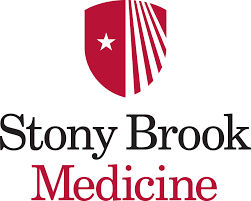
|
2012 - 2013 |
Research Assistant Professor Department of Psychiatry and Behavioral Science State University of New York (SUNY) at Stony Brook - Research imaging biomarkers of depression and PTSD |
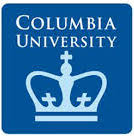
|
2007 - 2012 |
Assistant Professor of Clinical Neurobiology Division of Molecular Imaging and Neuropathology Department of Psychiatry New York State Psychiatric Institute Columbia University - Research human brain image processing, registration, and labeling |

|
2004 - 2007 |
Information Synthesis Theorist and Program Analyst Parsons Institute for Information Mapping The New School, NY - Complex data visualization and information visualization - Construction of visualization ontologies |

|
2004 - 2005 |
Research Scientist Department of Psychiatry Columbia University, NY - Detect biomarkers of disease in brain MRI data |
Education |
||
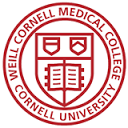
|
1998 - 2004 |
Weill Medical College of Cornell University, NY Functional MRI Laboratory, Memorial Sloan-Kettering Cancer Center Functional MRI Research Center, Columbia University Ph.D. in Neuroscience, May, 2004 Thesis: Automated brain labeling with Mindboggle - Invented Mindboggle to automate anatomical labeling of human brain data - Simple mindreading based on task-evoked fMRI activity |
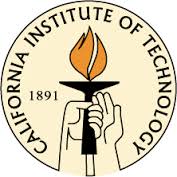
|
1996 - 1998 |
California Institute of Technology Computation and Neural Systems Program - Brain tissue optics research (with 2-photon microscopy and uncaging) - Biophysical computer modeling of light propagation - Kung fu and Muay Thai kickboxing clubs |

|
1994 - 1996 |
Massachusetts Institute of Technology Spatial Imaging Group, MIT Media Laboratory M.S. in Media Arts and Sciences, September 1996 Thesis: Dispersion Compensation for Reflection Holography - Dispersion correction for holographic view stations and edge-lit holograms - Computer graphics for the electronic-holography display |
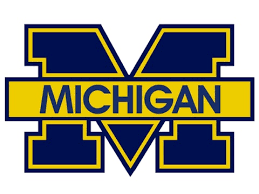
|
1991 - 1993 |
University of Michigan (Ann Arbor) B.S. in Biopsychology, Perception and Cognition Studies, May 1993 - Research assistant in the Kellogg Eye Institute - Independent computer-generated holographic stereogram research |
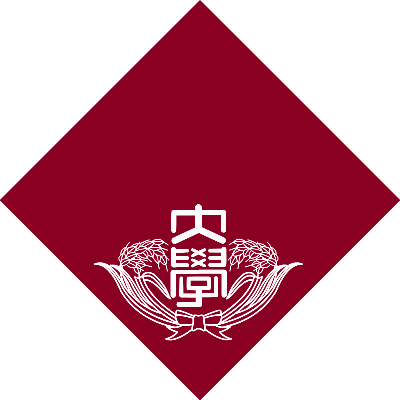
|
1990 - 1991 |
Waseda University (Tokyo, Japan) Japanese studies, International Division - Independent autostereoscopic holography research, Tama Art College - Shourinji kempo club, tournaments |

|
1988 - 1990 |
University of Southern California (Los Angeles) Resident Honors Program scholar - Research assistant in Hedco Neurosciences - Independent display holography projects - Kali-silat and kung fu clubs |

|
1985 - 1988 |
Ferndale High School (Ferndale, MI) - 4.0 GPA - Skipped senior year to attend college - Display holography in a basement lab - Cared for the school's reptiles, fish, and electric eel - Taekwondo, cross country, track |
Contributions to ScienceOpen science and mobile health researchI am a passionate proponent of open science, where researchers share data, code, resources and ideas, and where collective, collaborative endeavors are preferred over separate silos of independent research. At Sage Bionetworks, I helped to coordinate open biomedical challenges such as the Alzheimer's Disease Big Data DREAM Challenge. To vastly scale up open medical research, I have been heavily engaged in mobile health research projects. Before joining the Child Mind Institute, I was the scientific lead on the mPower app for tracking symptom severity in Parkinson patients, one of the first research applications built on top of Apple's open source ResearchKit platform. I built the mhealthx software pipeline for extracting features from sensor data from apps such as mPower, and designed visualizations to present mhealth data to patients, clinicians, and researchers. I am actively creating or helping develop mental health platforms, such as MindLogger, Mosaic, and LinguaLearn. Brain image analysis Brain image morphometry is almost universally restricted to computing volumes and thicknesses for labeled gyri and subcortical structures. To better characterize the anatomy and shapes of brains, as P.I. of an R01 project (MH084029) I oversaw the construction of a new brain labeling protocol and the world's largest manually labeled set of brain images, labeled according to this more consistent and accurate protocol. One goal was to create tools for extracting different kinds of brain features and to characterize their shapes in more detailed ways, so I created and continue to be the main developer of the open source mindboggle software for automated brain feature extraction, labeling, and shape analysis. Features include anatomical regions (like gyri and subcortical regions), sulcal folds, and fundus curves. Shape measures include two types of depth, two types of curvature, volume, thickness, Zernike moments, Laplace-Beltrami spectra, etc. Using the mindboggle software, I recently completed the largest brain shape studies ever conducted, one as part of the Alzheimer's challenge mentioned above, for estimating cognitive state based on MR data, and two others as part of a large-scale characterization of normal brain shape variation. I also helped develop a new method called "concurrence topology" for analyzing high-order relationships in temporal data (such as functional brain imaging data) using persistence homology, itself a new method from algebraic topology. Large-scale brain image processing software evaluations With the rapid growth in the number of brain image processing algorithms, it has become extremely difficult to know how they compare with each other or which to choose for a given study. This is exacerbated by the fact that the developers of these algorithms rarely conduct a rigorous evaluation against other methods, so I published the largest registration and brain extraction evaluation studies ever conducted and have since participated in evaluation studies of other brain image processing steps as well. Invertebrate sleep and learning I have collaborated with my identical twin brother for years, and these studies have focused on how invertebrate sleep impacts a society, when and where bees sleep, and how it affects their ability to communicate. Holography Since the time I built a basement optics lab with a friend in high school to create holograms, I have been making display holograms and conducting research on 3-dimensional display technologies, at the University of Southern California, the University of Michigan, and at the MIT Media Laboratory. For my thesis work at MIT, I created the deepest dispersion-controlled viewing stations, and the thinnest edge-lit holograms, both of which use a hologram to present specially controlled light sources (pre-distorted wavefronts or pre-dispersed light) to a second, display hologram for sharper and deeper images. Since then, I have formulated a general raytracing equation for holograms. Holography has influenced my later research in surprising ways. |